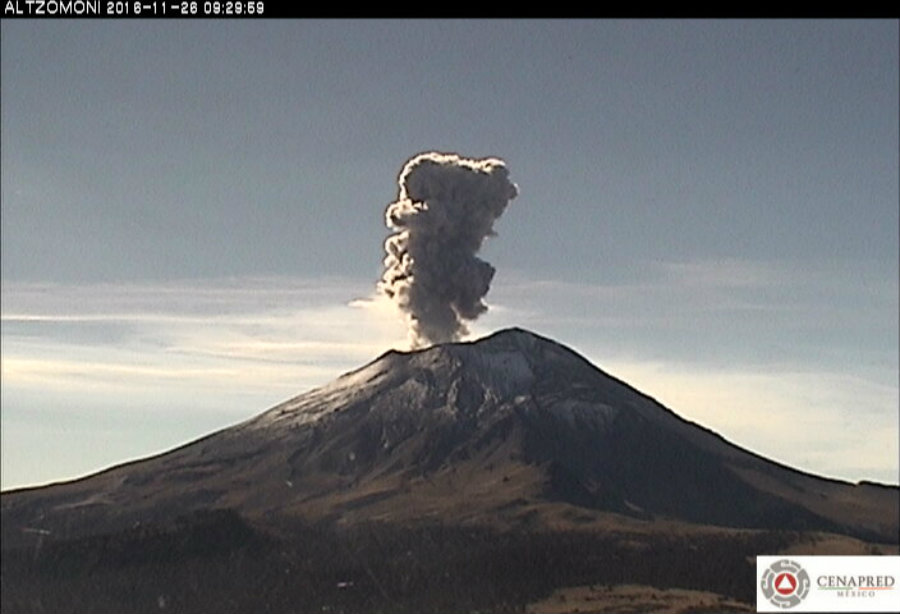Mexico’s Popocatépetl volcano has been active since Friday when a massive column of ash of 3.10 miles (5 kilometers) high was seen in the sky. The volcano is located Southeast of Mexico City, at Puebla state. Villages in the surroundings have been warned due to seismic activity coming from the volcano which could follow the eruption.
The CENAPRED, the Mexican National Center for Disaster Prevention, published online a warning reporting that since Friday the Popocatépetl volcano recorded 129 exhalations including steam and gas emission. Three explosions were also reported Saturday morning. Due to its activity, authorities have declared a Yellow Alert of Mexico’s Volcanic Traffic Light warning system.

The volcano’s activity started its seismic activity yesterday at 07:44 p.m. local time with a preliminary magnitude of 1.8. Also Saturday night the crater showed incandescence with some exhalations.
National authorities have warned people they should not go near the volcano nor its crater because of risks of ballistic fragments and the hazard of toxic gasses. The security perimeter around the Popocatépetl has a 12 kilometers radius, and the most vulnerable municipalities are Atlixco, Cholula, Tochimilco, San Nicolás de Los Ranchos, Tianguismanalco, Ocoyucan y Puebla.
Mexican authorities are working hard to prevent any human loss
Luis Felipe Puente, Mexico’s director of civil protection, has been active on Twitter warning people about the dangers of the Popocatépetl volcano. He has shared images, videos and safety measures against volcano ashes which can be nocive for the respiratory system.
Imagen de la actividad del #Popocatépetl con vista desde #Puebla. pic.twitter.com/V4jz5v42XQ
— Luis Felipe Puente Espinosa (@LUISFELIPE_P) November 25, 2016
The CENAPRED explained that the recent activity in the volcano had triggered the Volcanic Traffic Light, a system that establishes how people has to behave depending on volcano activity. Mexican authorities have declared a Yellow Stage 2 warning, meaning that municipalities near the Popocatépetl volcano have to be prepared to evacuate their homes.
The Yellow Stage 2 alert includes an increase in the volcano’s activity. Steam and gas emissions, ashes in the proximities, incandescents and mud flow are seen at the volcano site. To become a Yellow warning Stage 3, the volcano’s crater has to spell constant columns of ash and explosions, as well as lava. Popocatépetl volcano is being monitored continuously to report other alerts quickly.
Any changes will be communicated by the CENAPRED and other authorities.
In the case of ashfall, people has to cover their nose and mouth with a handkerchief or face mask. If eyes and throat are affected, clean them only with water. Individuals in the surroundings should stay indoors as much as possible with closed windows. Avoid contact lenses to reduce eye irritation.
About Popocatépetl
Popocatépetl is one of Mexico’s estimated 1,500 potentially active volcanoes, and since 1994, it has been active. The volcano is the highest peak in Mexico at 17,802 feet, after Citlaltépetl at 18,491 feet. Popocatépetl means “mountain that smokes.” It is Mexico’s most active volcano, and people are used to its actions.
Throughout history, Popocatépetl has had more than 15 major eruptions since the arrival of the Spanish in 1519. The volcano’s last blasts occurred on August 17, 2016. Its recent activity is linked to two volcanoes in Guatemala: Santa Maria’s Santiaguito and Fuego, which means “fire.”
Source: CENAPRED
